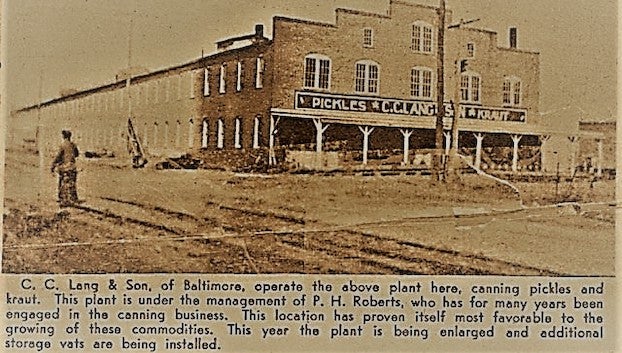And then there was the pickle factory story
Published 8:20 am Tuesday, May 23, 2023

- This image was taken from the Special Rotogravure Section featuring the First City to Bear the Name of Washington in the Washington Daily News
|
Getting your Trinity Audio player ready...
|
Growing up on Fourth Street afforded me the opportunity to learn about so many fascinating things about Washington’s history. Many of the stories shared with me by the elders in my family, and those that I got to listen to from elderly neighbors were gold mines of information that I am gleaning from today.
That is one reason I along with my family and other community leaders, are planning to develop a little pocket park on the land owned by my family, to share this amazing history of the Fourth Street, (now Dr. Martin L. King Drive) and nearby streets and their impact on Washington’s history.
As a child on the front porch cutting out paper dolls, I got a chance to hear about stories my grandmother and her neighbors told that were somehow lost for decades in my memory until I revived my interest in them.
These stories once researched, showed me how prosperous and innovative the community I grew up in was. Neighbors who sat on my grandmother’s front porch are now my heroes as I learn more about their lives. Mrs. Odessa Barrow who lived right around the corner on Van Norden Street, had shared with my grandmother how she, L. R. Randolph and George Bailey spearheaded an effort in 1949 to build a hospital for Blacks at the corner of Bridge and Van Norden Streets (where the Beaufort County Boys and Girls Club is located today.) The Black Community raised funds for the hospital in 1953, but it was later decided since Washington had three hospitals at that time, the money would be better spent to create a playground and a recreation center for the youth of the community. In the early 1960’s they purchased the land and the recreation center and playground were built.
I learned about the first kindergarten for Black children established in Beaufort County in the early 1900’s was in my neighborhood. I learned about what role the ‘Garment District’ played in my neighborhood The Garment District was an association of women who lived on Fourth Street and nearby, who made clothing, hats and other fashion essentials from their homes. Many women people brought clothing from them instead of shopping in stores downtown.
My favorite story I heard the elders talk about was the pickle factory that was several blocks from the house I grew up in on Fourth Street. Neighbors talked about how they grew cucumbers and sold them to the pickle factory. One of the joys of my childhood was going to Matthew Gibbs store (at that time was located at Gladden and Fifth Street.) He had a big wooden barrel filled with sour pickles in it. The pickles were huge and only cost ten cents. They were the best pickles ever!
I’m not for sure where Mr. Matthew brought those pickles from because by the time I was old enough to walk to the store by myself, the pickle factory was gone. I would just imagine they came from the magically wonderful pickle factory not far from my house.
The Pickle Factory, named the C. C. Lang and Son Pickle and Kraut Company was located near the corner of Fourth and Fleming Streets in the heart of the Black neighborhood in the mid 1940’s. It was relocated from Third and Hackney Streets, the original location when it was built around 1922 (?). (The original location is shown in the picture.) It was an extension of the C. C. Lang Pickle Company that begin in 1881 in Baltimore Maryland. Lang also established pickle factories in Virginia, North Carolina, South Carolina New York and Michigan. The factory manager was Patrick Henry Roberts when it opened. By the late 1940’s, Lymon Bradford Roberts managed the Fourth Street location. I’m not sure what happened to the pickle factory but by the time I started first grade in the late 1950’s, the factory was gone. But there sure were a lot of good stories that remained about the pickle factory and how folks found a hundred ways to fix pickles for meals.
I will share more history about the prosperous impact Fourth Street and nearby streets in upcoming columns but for right now, I’ll just leave you with the “and then there was the pickle factory story.”
Leesa Jones is a Washington native and the co-curator of the Washington Waterfront Underground Railroad Museum.





